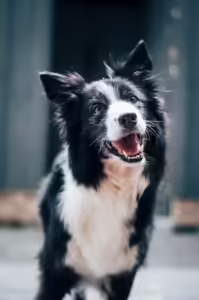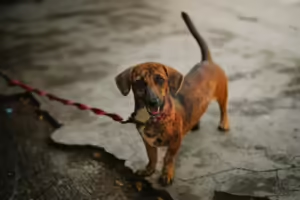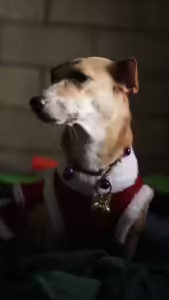Introduction to the Aspin dog
The Aspin canine, otherwise called the Askal in the Philippines, is a wonderful variety that typifies flexibility, versatility, and steadfastness. Dissimilar to numerous thoroughbred canines that are specifically reproduced for explicit characteristics, the Aspin is a blend of different local varieties, showing up and character.
These canines have been an essential piece of Filipino culture for a really long time, frequently seen wandering the roads and provincial regions, filling in as faithful allies to endless families. Their normal choice over ages has made them extraordinarily solid, ready to flourish in different conditions, from the clamoring city roads to the calm open country.
Aspin dog Notwithstanding their road starting points, Aspins are not even close to normal. They are insightful, speedy students, and have serious areas of strength for a nature, making them incredible guard dogs. Be that as it may, they are additionally free, and that implies they may not necessarily in all cases be as tenacious as different varieties, yet they actually structure profound bonds with their proprietors.

Aspin dog Really focusing on an Aspin is generally clear, as they are low-support concerning prepping and have a powerful constitution. Customary activity, a decent eating regimen, and infrequent preparing are generally sufficient to keep them sound and blissful.
What makes Aspins really exceptional is their flexibility; they can undoubtedly adjust to various day to day environments, whether in a roomy home or a little loft. This flexibility, joined with their loving nature, makes them ideal pets for different families. Sadly, Aspins have frequently been neglected for thoroughbred canines, prompting a few legends and misinterpretations about their disposition and teachability.
Aspin dog In any case, the people who have had the joy of claiming an Aspin realize that these canines are just as adoring, faithful, and clever as some other variety. Taking on an Aspin not just gives a caring home to a meriting canine yet additionally offers a one of a kind chance to encounter the friendship of a really striking variety that has been molded by the rich social legacy of the Philippines.
What is an Aspin Canine?
The Aspin canine, frequently alluded to as the “Askal” in certain districts, is a local canine type of the Philippines. Dissimilar to numerous different varieties, the Aspin is certainly not a thoroughbred yet rather a blend of different local varieties that have normally developed after some time.
These canines are frequently viewed as road canines, yet as of late, they’ve begun earning respect as incredible family pets.
The Beginning and History of Aspin Canines Local Starting points
The Aspin canine has establishes profoundly implanted in the provincial and metropolitan scenes of the Philippines. They have been around for a really long time, filling in as faithful allies to Filipino families. Dissimilar to pedigreed varieties that were created through particular reproducing, Aspins are the aftereffect of regular determination, making them exceptionally versatile and strong.
Aspin Canine versus Thoroughbred Canines
Aspin dog While thoroughbred canines are reproduced to keep up with explicit attributes, Aspins are exceptional in their variety. Each Aspin has its own arrangement of qualities, making them stand-out. This qualification features their adaptability and normal strength, frequently making them better and more versatile than numerous thoroughbreds.
Size and Weight Aspin dog
Aspin canines come in different sizes, yet they are commonly medium-sized. They by and large weigh between 25 to 45 pounds. Their size can shift contingent upon their genealogy, with some Aspins being bigger or more modest than normal.
Coat and Tones Aspin dog
One of the most striking highlights of Aspin canines is the wide assortment of coat tones and examples they come in. You can track down Aspins in shades of brown, dark, white, or a blend of these varieties. Their jackets can be short or medium long, making them moderately low-upkeep with regards to prepping.
Steadfast and Defensive Aspin dog
Aspins are known for their dependability to their families. They structure solid bonds with their proprietors and are frequently defensive, making them fantastic guard dogs. Their readiness and impulse to monitor their region are profoundly instilled, because of their set of experiences as road canines.
Wise and Versatile Aspin dog
These canines are profoundly smart and speedy students. They can without much of a stretch adjust to various conditions, whether in a bustling city or a calm rustic region. This flexibility is one reason they are so cherished by the individuals who carve out opportunity to get to know them.
Free Yet Friendly Aspin dog
While Aspins are free commonly, they likewise appreciate investing energy with their families. They may not be as tenacious as a few different varieties, however they surely value friendship and can be very cherishing once they trust their proprietors.
Dental of Aspin dog
Aspin canines, known for their flexibility and versatility, frequently face explicit dental wellbeing challenges that require mindful consideration. Given their fluctuated diet and the normal mileage on their teeth, it’s pivotal to screen their oral cleanliness consistently.
Dental issues in Aspin canines can appear as tartar development, gum sickness, or tooth rot, which can prompt more serious medical conditions whenever left untreated. Normal brushing with a canine explicit toothpaste, alongside giving dental bites and toys intended to diminish plaque, can assist with keeping up with their dental wellbeing. Moreover, routine veterinary check-ups are fundamental for early recognition of any likely issues.
By keeping a reliable dental consideration routine and tending to any indications of dental uneasiness instantly, you can assist with guaranteeing that your Aspin canine remaining parts solid and cheerful, with a splendid grin that supplements their energetic character.
Eye color of Aspin dog


